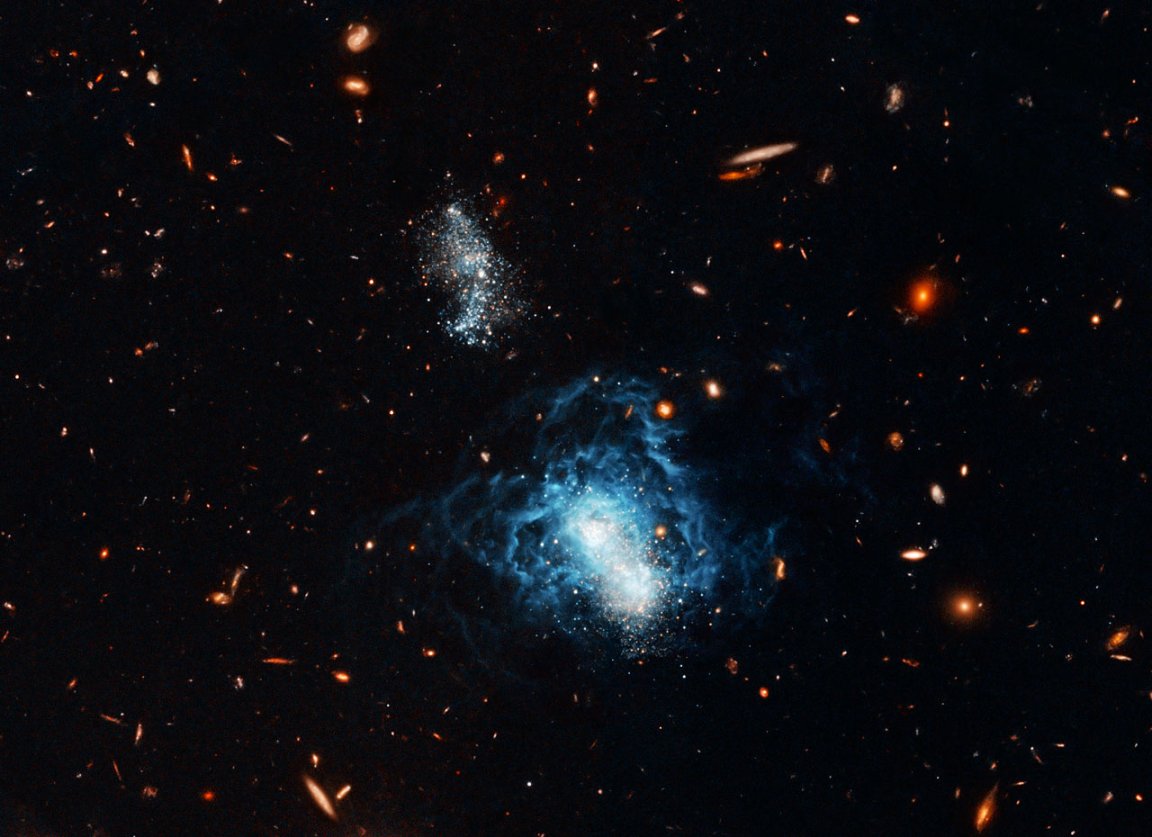

This pretty blue galaxy might not look like much, but it may in fact be the youngest galaxy ever found (Abell 2744 comes in a close 2nd place). Known as I Zwicky 18, this distant galaxy — which, from this point onward, we’ll simply call ‘Zwicky’ — formed approximately 500 million years after the universe materialized in a ‘big bang.’ Strangely though, despite Zwicky’s young appearance, it would seem as if the galaxy is a late bloomer, and didn’t start furiously churning out stars until 13, yes 13, billion years after the big bang.
Since then, it has experienced numerous starburst phases, which see dramatic increases in the amount of stars galaxies churn out. The first of which took place 500 million years ago, and the latest 4 million years ago. Of course, these periods are low-key, considering the fact that Zwicky is rather small; it’s technically a dwarf irregular galaxy.
Per NASA, “The two major starburst regions are the concentrated bluish-white knots embedded in the heart of the galaxy. The wispy blue filaments surrounding the central starburst region are bubbles of gas that have been heated by stellar winds and intense ultraviolet radiation unleashed by hot, young stars. The redder stars are slightly older stars and star clusters, but they are still less than 1 billion years old. A companion galaxy lies just above and to the right of the dwarf galaxy. The companion may be interacting with the dwarf galaxy and may have triggered that galaxy’s recent star formation. The red blobs surrounding the dwarf galaxy are the dim glow from ancient fully formed galaxies.”
This image was captured using Hubble’s ‘Advanced Camera for Surveys’ back in 2003.